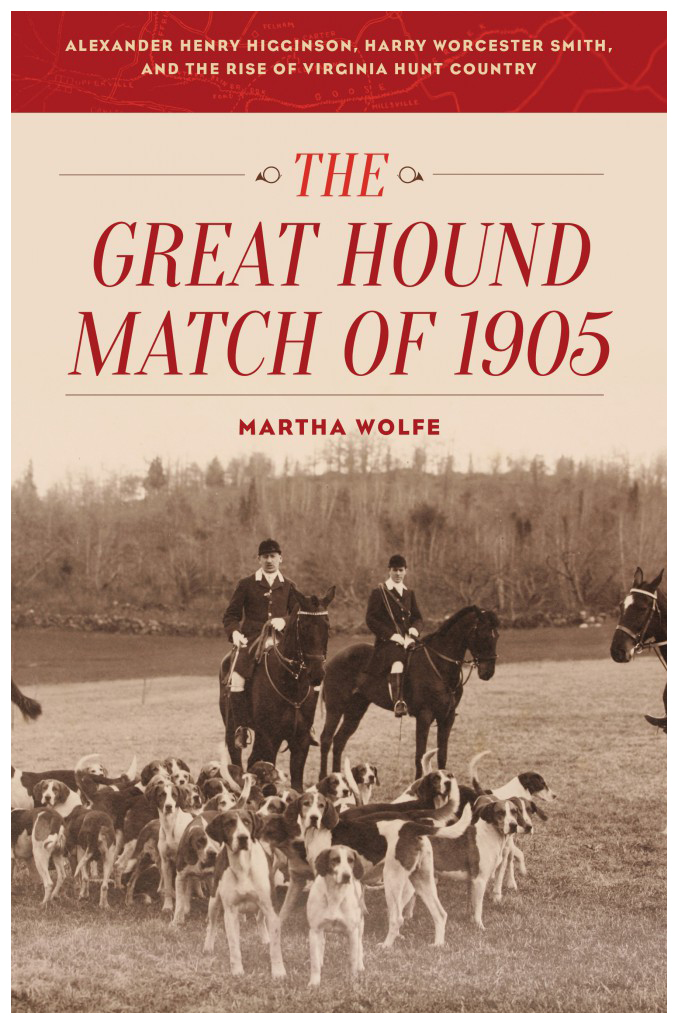
The Cad ~ I
{Part One}
I’m not sure that many people would have characterized Harry Worcester Smith as a good-for-nothing “cad” but, neither might they have called him a gentleman. He was highly opinionated and he had a temper; he had a wicked sense of humor and he suffered no fools. He was a scalawag, a bit of a braggart, maybe a knave, possibly a scoundrel. It’s perhaps divine providence or poetic justice that his favorite horse, his horse-of-a-lifetime, was named “The Cad.”
The Cad’s given name was The Cid, “but on account of a misspelling in the Stud book entry,” Harry writes in the “Steeplechasing” chapter of his unpublished autobiography, “the gamest thoroughbred I ever threw a leg over went through life carrying the name which means good-for-nothing.” The Cad’s breeding certainly wasn’t good-for-nothing. His equine ancestors included shining stars in America’s Thoroughbred foundation stock: Lexington, Glencoe and Tranby on his sire, Uncas’, side and Mortimer, Virginia and Nottingham on his dam, Parasol’s, side. The extraordinary Tranby is the horse that carried Squire Osbaldeston in early November, 1831, in his outrageous wager to complete a two-hundred mile ride around England’s Newmarket race course in under ten hours. Osbaldeston was allowed an unlimited number of horses to do the job: he brought twenty. Changing mounts fifty times during the Squire’s race against the clock, Tranby was the only horse to complete four of the four-mile laps at racing speed. It’s clear that The Cad’s ancestors had “staying power.”

“The Cad was very high-mettled,” Harry writes of his favorite’s temperament. “When they were trying to break him at the track to start from the barrier, like a gentleman he resisted the whip in the jockey’s hands, the spur on his heels and the bull-whip with which the assistant starter cut him, and it did not take more than two or three mornings for him to get so bad that they decided that they could do nothing with him; so he was shipped back to Genesee and stabled with ‘Jim Sam’s’ string down near the horse show grounds.” Jim Sam was a Wadsworth, of the well-known hunting family in upstate New York’s Genesee Valley where Harry hunted regularly behind Colonel Wadsworth’s hounds. Here, in the broadly gorged valley, is where Harry first laid eyes The Cad.
“He was perfectly balanced, with an intelligent head and eyes that spoke and followed you as he looked through the upper door as you walked around…I was so taken with him that when at the end of the hunting season I had a chance to buy him at $150 I jumped at the opportunity.”
Along with his trusted trainer Dolph Wheeler, Harry rode and trained his own string of steeplechasers: “King T.,” “Sacket,” “George Keene” and “The Cad.” “Living in snowy, frost-bound New England,” he writes, “there was only now and then a day through the winter when one could school his hunters or steeplechasers over the walls about Grafton…Many is the day I would push through business, telephone to Wheeler and, if the going was soft, out we’d go no matter how deep the snow was, and so my horses got their schooling.”
Harry had his eye on the Championship Meadow Brook Cup Hunter’s race at Brookline in the spring of 1900. His confidence got a big boost while training over the course’s water jump. The Cad was four strides out when his hoof beats startled two workmen who had been cementing the basin on the far side of the jump. The men stood, “and as the jump was quite shallow they were fully three feet higher than the hedge itself, but this was nothing to The Cad. He stood off, cleared the hedge, sailed over the top of one man and landed way into the grass far beyond the edge of the cement.” Later, Harry went back with a measuring tape and found that The Cad had cleared twenty-eight feet.
The race itself started well, but ended badly for Harry. At the fourth hedge The Cad “took the bit in his teeth and literally tore at the next jump. I knew he was going too fast but there was no chance to take a pull and in a second he was too close to the jump and so caught it under his knees,” resulting in a bad fall.
Harry hovered “between life and death” for nearly a week. “The concussion was so bad,” he writes, “that [a few months later] a spot two or three inches square” on the crown of his head turned white. “In addition, on both sides, the tops of my back teeth were cracked off.” His convalescence was long and shook his confidence, but The Cad was uninjured and Wheeler kept him fit through the summer and fall. The upside of his accident was that Boston’s provocative socialite Isabella Stewart Gardner “sent me flowers every day.”
That August Harry entered the Hunter’s Steeplechase at Saratoga. Through no fault of The Cad’s or Harry’s, he fell again and the horse’s reputation grew rank.


0 Comments